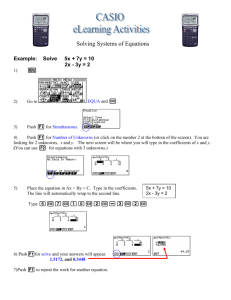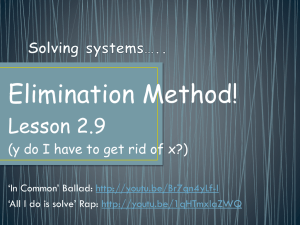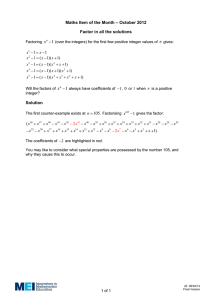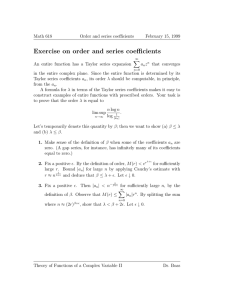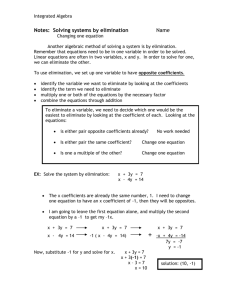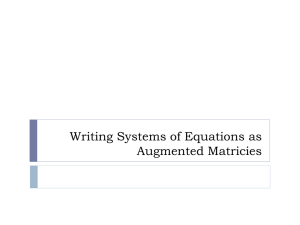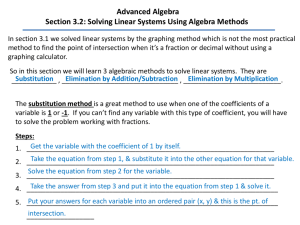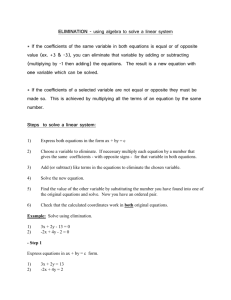Algebra 1
advertisement
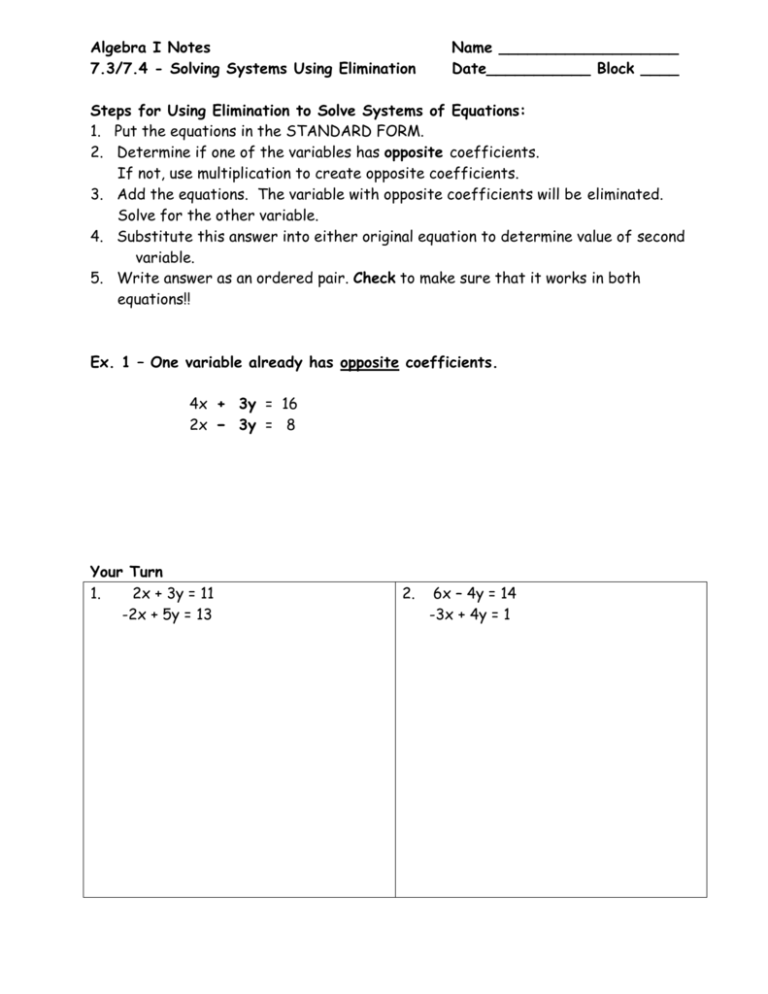
Algebra I Notes 7.3/7.4 - Solving Systems Using Elimination Name ___________________ Date___________ Block ____ Steps for Using Elimination to Solve Systems of Equations: 1. Put the equations in the STANDARD FORM. 2. Determine if one of the variables has opposite coefficients. If not, use multiplication to create opposite coefficients. 3. Add the equations. The variable with opposite coefficients will be eliminated. Solve for the other variable. 4. Substitute this answer into either original equation to determine value of second variable. 5. Write answer as an ordered pair. Check to make sure that it works in both equations!! Ex. 1 – One variable already has opposite coefficients. 4x + 3y = 16 2x − 3y = 8 Your Turn 1. 2x + 3y = 11 -2x + 5y = 13 2. 6x – 4y = 14 -3x + 4y = 1 Ex. 2 - One variable has coefficients that are the same. x + 3y = 3 x + 6y = 3 Your Turn 3. 7x – 2y = 5 7x – 3y = 4 4. x – y = -4 x + 3y = 4 Ex. 3 - One variable has one coefficient that is a multiple of the other coefficient. Multiply one equation to create opposite coefficients. 4x + 3y = 2 2x + 5y = 8 Your Turn 5. x+y=2 2x + 7y = 9 Adding or subtracting won’t eliminate a variable, so we have to use multiplication to create opposite coefficients! 6. 6x + 5y = 19 2x + 3y = 5 Ex. 4 - Neither variable has coefficients that are opposites, the same, or multiples of each other. 3x + 2y = 8 5x + 3y = 14 Your Turn 7. 4x - 3y = 8 5x - 2y = -11 we need to multiply both equations 8. 7x - 6y = -1 5x – 4y = 1


